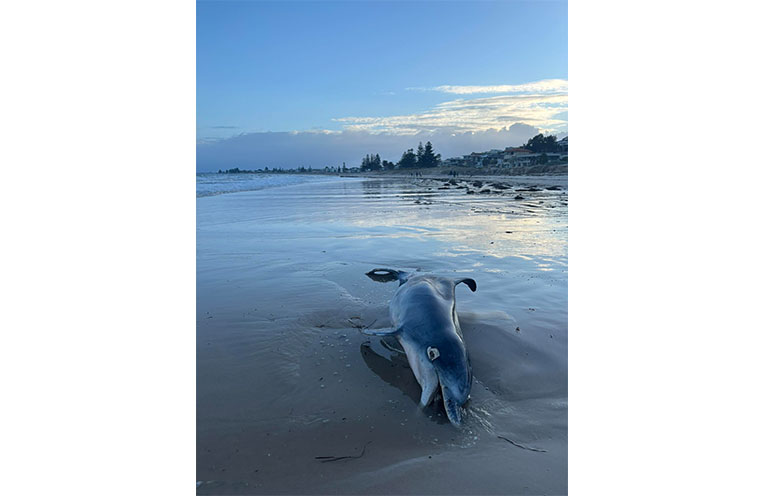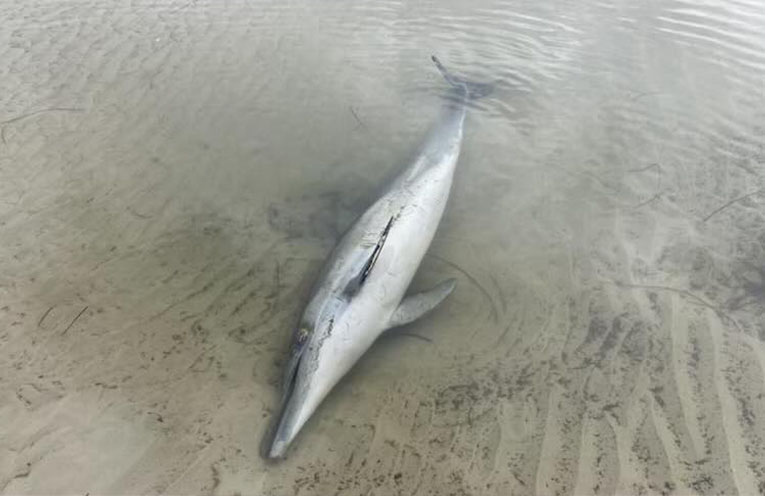MARINE algal blooms are the result of a rapid increase of phytoplankton in the ocean.
While phytoplankton and algae are essential to marine ecosystems, forming the base of the marine food web, producing much of the world’s oxygen, and are a major sink for atmospheric carbon dioxide, their excessive growth can cause harmful effects on marine life, water quality, and human health.
The extensive and long-lived bloom event recorded off South Australia in recent months is a timely reminder that when a coastal system is out of balance, catastrophic consequences can occur.
Algal blooms have been around a long time and in some cases are natural, and not all algal blooms are harmful.
Most algal blooms recorded to date in NSW have been harmless but there are about 200 species of micro-algae with the potential to produce harmful biotoxins that can be detrimental to marine life and human health.
These are primarily species of cyanobacteria, certain dinoflagellates and some diatoms.
In low numbers these species are innocuous, but the rapid increase of any one or combination of these species can cause Harmful Algal Blooms (HABs), which are generally the result of human activity, poor environmental management, pollution (overloading of nutrients) and climate change.
Algal blooms can often be identified by seafoam and what can look like a light oil spill or paint spilled in the water, but these are not always HABs.
River and land-based runoff containing high levels of nutrients (nitrogen and phosphorus), from agriculture, sewage or industrial discharges, together with warm waters and sunlight provide favourable environmental conditions for accelerated phytoplankton growth, which may lead to algal blooms.
Shellfish can filter and accumulate the biotoxins produced by HABs leading to contaminated seafood.
To manage and safeguard consumers from potential risk the NSW biotoxin monitoring programme tests the shellfish flesh and the waters around shellfish growing areas such as Port Stephens.
Another major risk associated with algal blooms is eutrophication which occurs when excess nutrient loading (often Nitrogen and Phosphorus) surpasses the ability of the water body to naturally flush out the nutrients.
The flushing time for the Port Stephens estuary was reported by Ajani in 2024 to be an average of 52 days, with rapid flushing in the east port of one to five days, increasing with distance from the Heads (entrance).
The markedly slower flushing time of the western port is probably slow enough to allow algal blooms to occur after a pulse of nutrients from the catchment.
Excess nutrients can stimulate rapid overgrowth of algae.
As the algal bloom dies back and sinks to the seabed the decomposition process consumes oxygen from the water column causing a dead zone in the water and the seabed.
This low oxygen zone suffocates fish and other marine life, particularly impacting species with limited home ranges, and strong site fidelity that lack the ability to escape the dead zone.
HABs can also cause direct physical impact on marine fauna: clogging and lacerating fish gills, destroying the waterproofing of seabird feathers, potentially causing mortalities in turtles, dolphins, whales and seals.
The reduced light penetration and smothering impacts seagrass and kelp beds, important fish habitat and causes extensive economic impacts.
Coastal communities that rely on fishing, aquaculture, recreation and tourism are particularly vulnerable to impacts from algal blooms.
In Australia, there is a select, but growing, group of biotoxin-producing estuarine microalgal species that have been documented to cause seafood poisoning, and the deaths of fish or other marine life, and direct human impact including skin rashes and respiratory symptoms.
The recent HAB in South Australia has impacted important habitat and resulted in the death of thousands of fish, sharks, rays, and other marine life essentially suffocating, dying and being washed up onto the beaches, impacting the beaches as a tourism asset.
In NSW, blooms linked to fish kills are a regular phenomenon, with around 20 cases reported annually.
However, the mechanisms of toxicity in these cases ranges from well-known to poorly understood.
The free-swimming microalgae Heterosigma akashiwo has been recorded in Port Stephens in low numbers.
It frequents brackish to full sea water and produces the biotoxin, Brevitoxin, which in sufficient abundance is strongly toxic to humans and marine fauna.
In California, this biotoxin was responsible for widespread seabird deaths by destroying the waterproofing of their feathers among other ecological and economic impacts on visual amenity, shellfish harvest, fish kills and fishing.
Environmental conditions in the Port Stephens estuary over many years have been deteriorating especially after heavy weather events.
It would not take too many variables to align to result in a serious HAB event in the estuary, given the slow flushing times coinciding with nutrient laden water from the catchment.
An event of sufficient magnitude could potentially damage the ecology and economy of the estuary.
The solution?
Early mitigation is probably the best option, before it becomes the usual expensive catch-up blame game.
To date Port Stephens has not experienced a HAB, but with clear warnings from events in South Australia and elsewhere, relevant authorities should be taking steps now to mitigate against this possible future outcome.
Decreasing nutrient laden water entering the estuary and urgent action on climate change can help reduce the risk and severity of a HAB.
Implementing effective riparian management, riverbank stability etc. and better agricultural practices to reduce the sediment and nutrient runoff entering the estuary is a critical step in improving estuarine health and productivity.
Decreasing urban pollutants by improved urban planning and storm water management in urban areas and adopting climate mitigation strategies at a local council level by encouraging mitigation projects will help mitigate the worst of climate induced changes on the estuary.
By Iain WATT, President, EcoNetwork Port Stephens
You can help your local paper.
Make a small once-off, or (if you can) a regular donation.
We are an independent family owned business and our newspapers are free to collect and our news stories are free online.
Help support us into the future.





